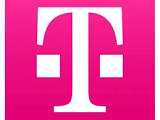
Starting signal for 16 million Germans on the 5G motorway
18. Juni 2020Starting signal for 16 million Germans on the 5G motorway
Berlin, 18.6.2020
Since yesterday, more than 16 million people in Germany can use the Telekom 5G network. This means that the mobile communications group now supplies more than 1,000 towns and communities with the new 5G standard in whole or in part.
The expansion is to continue at full speed, however. By mid-July 2020, over 40 million people throughout Germany will be able to use 5G in Deutsche Telekom’s network. Telekom Germany CEO Dirk Wössner said: „Despite the corona crisis … our technicians have made over 12,000 antennas fit for 5G. By the end of the year there will even be 40,000 antennas.
Telekom uses 15 megahertz mobile phone frequencies in the 2.1 gigahertz band for LTE and 5G. Of these, 5 MHz originate from the previous 3G spectrum and will be rededicated. In addition, Deutsche Telekom acquired 10 MHz of the current 3G spectrum from another provider ahead of schedule. This will also be used for LTE and 5G. Deutsche Telekom had originally purchased this spectrum for use from 2021, but the Group tripled the amount of spectrum previously used for the new technologies in this frequency range through the early acquisition. This will enable Deutsche Telekom customers to benefit from significantly higher LTE and 5G surfing speeds earlier than originally planned.
5G generally uses a high frequency in large cities: 3.6 GHz at Deutsche Telekom. High frequencies offer higher speeds. However, these frequencies do not reach very far. At the lower 2.1 GHz frequency, the range of 5G antennas is much greater, but the bandwidth is smaller here. This principle is already familiar from LTE expansion: Here, long-range frequencies are used primarily for area coverage.
Further increase in performance also with LTE
Thanks to the expansion, LTE users can now also expect a further boost. More bandwidth is available through the use of Dynamic Spectrum Sharing (DSS). This means that Deutsche Telekom operates two mobile communications standards in parallel in one frequency band. The new technology distributes the spectrum between LTE and 5G users according to demand. The network automatically adapts to the needs of the respective customers within milliseconds. As a result, LTE users also surf faster than before.
DSS and the additional spectrum will also increase the data rate: According to Deutsche Telekom, speeds in rural areas will more than double in some cases. Here, customers will now be able to surf at up to 225 Mbit/s. In urban areas, peak speeds will be 600-800 Mbit/s. These speeds will benefit not only customers with the new 5G smartphones, but also customers in the LTE network. In large cities such as Berlin or Cologne, the 5G antennas on 3.6 GHz even transmit at rates of up to 1 Gbit/s and more.
How large the network coverage is now can be seen on this map:
https://www.telekom.de/start/netzausbau
Huawei stays in business
The Group has made a clear statement on the security of the 5G network. As early as 2019, it has been decided to keep Chinese suppliers away from the security-critical core network, where the central elements for controlling and processing data in the network are located. This also applies to the 5G core network, which is currently undergoing standardization.
As far as the access or antenna network consisting of the radio masts and the associated transmitting and receiving equipment is concerned, 4G and 5G cannot be viewed in isolation, says Telekom. 5G is technically not a network in its own right, but adds new functions and technical features to the existing 4G network. For example, it is not possible to upgrade LTE masts with 5G components from a manufacturer that does not already provide 4G technology. This is also less problematic, however, as no data is processed in the so-called Radio Access Network (RAN).
In today’s existing network, the antennas used are mainly components from Ericsson and Huawei. They will also be used for the expansion to 5G and have concluded new contracts accordingly. In order to achieve a greater variety of components in the medium term, Deutsche Telekom supports the so-called Open – RAN – initiative, which is intended, among other things, to make the technical infrastructure less dependent on specific hardware.
The governing coalition in Berlin has long been arguing about Huawei’s involvement in the 5G rollout. The SPD wants to exclude providers from countries without constitutional controls as a precaution. Chancellor Angela Merkel and Minister of Economics Peter Altmaier (both CDU) have so far resisted this. They fear trouble with China and disadvantages for the German economy.
Industry experts also fear that an expansion without Huawei would take considerably longer and also entail higher costs. Deutsche Telekom would not only have to rely on other equipment suppliers. It would also have to remove technology already installed at critical points, which would also affect the current 4G network (LTE). According to the internal paper, this process could take up to five years. Finally, the Federal Network Agency states that no equipment supplier should be specifically excluded. However, high security requirements would have to be met. If the German government should decide against the use of Chinese technology, this would mean costs of at least three billion euros, according to expert circles.

